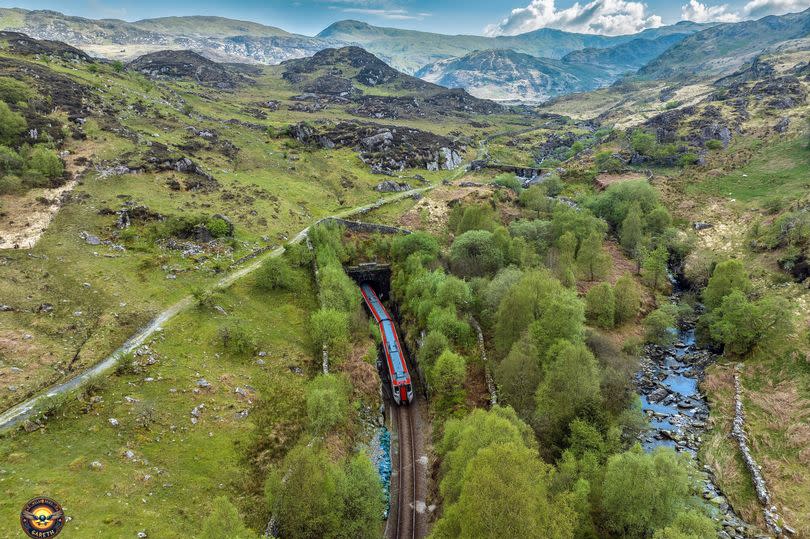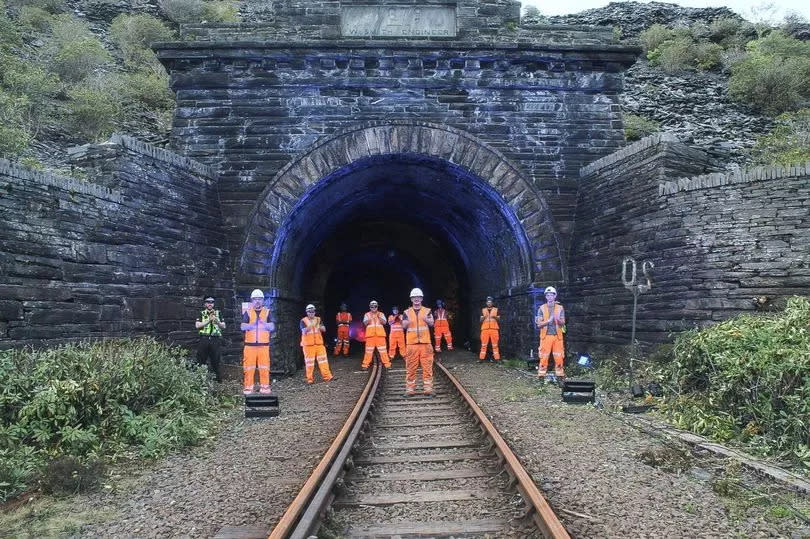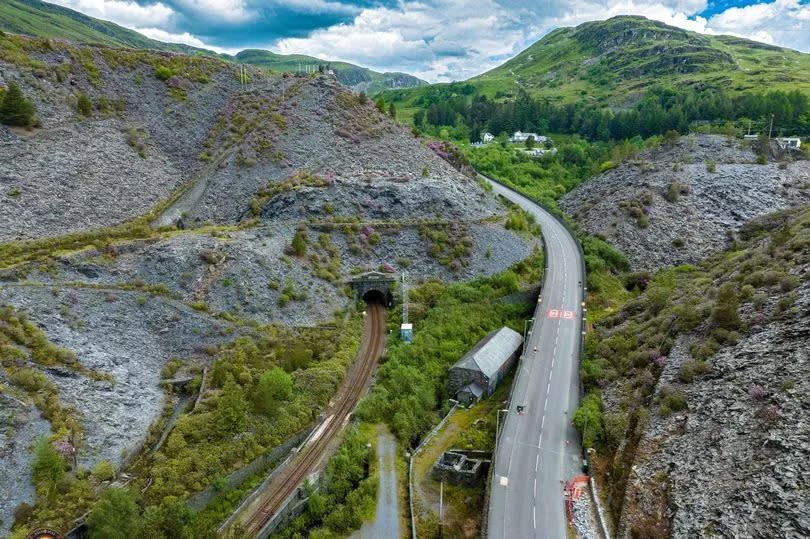The spectacular 2.5-mile tunnel that changed part of North Wales forever

It may not quite compare with the majesty of the Alpine tunnel that releases Bernina Express trains over the Landwasser Viaduct. But for the sheer beauty of its surrounding countryside, the Ffestiniog Tunnel comes pretty close.
Its construction, in the 1870s, was a triumph of Victorian endeavour and its survival has been just as epic. Running 2.5 miles underground from Blaenau Ffestiniog, in one of the most inhospitable parts of the Conwy Valley Line, its future has long been questioned but it’s still open and still defying the odds.
Cut through slate bedrock, this was once the longest unlined tunnel in Europe (it’s still the longest in the UK). The line, carrying trains between Blaenau and Llandudno Junction, reaches its highest point at 790ft, midway throught the tunnel.
READ MORE: Tragedy as woman, 33, dies at Welsh beach
READ MORE: Martin Lewis urges anyone with a state pension to invest £31 straight away
In an area of heavy rainfall, and being unlined, over the years Ffestiniog Tunnel has been plagued by water ingress, rockfalls and landslides. It was closed for long periods in 2017 and 2019. At one point, with costly repairs needed, the writing seemed to be on the wall.
Rail buffs joked it was closed longer each year than it was open. But in 2019, Network Rail bit the bullet and sanctioned a £2.1m rockfall protection netting system that seems to have done the trick. For this, the contractor, Griffiths Civil Engineering, used novel techniques to overcome the challenge of working in a 2.5-mile, single-track tunnel in which fumes, dust and rockfalls were an ever-present threat.
The work focused in the central part of the tunnel recorded on old drawings as the “bastard slates”. Between 1873 and 1879, two teams of workers at each end had excavated 300,000 tonnes of stone, advancing 8.4ft per day, only to slow as they reached the iron-hard slates in the middle.
Even among contemporary engineers, the slate bed there is renowned for wearing out drill bits in next to no time. Traditional hand drilling took around an hour to fix a single two-metre bolt – and for the new rock protection netting, 600 stainless steel rock bolts, each 2.5 metres long, were needed. Join the North Wales Live WhatsApp community group where you can get the latest stories delivered straight to your phone

To overcome the challenge, Griffiths used rail-mounted hydraulic drill rigs. “This reduced drill times to under 10 minutes,” said the company at the time. Meanwhile, misting units dampened down dust and the use of a low-emission fuel reduced the threat from carbon dioxide and nitrogen oxides. The innovations echoed those of the tunnel’s construction when steam-powered drills and ventilation systems were introduced.
The problems of maintaining the tunnel pale against those further up the line, where the railway runs close to the River Conwy. Flooding has forced multiple closures over the years, often for lengthy periods. The most recent disruption, in April, only lasted four days after Network Rail engineers worked around the clock to install more than 200 tonnes of ballast washed away near Dolgarrog station.
The southern entrance of the Ffestiniog Tunnel lies across the A470 from Zip World Llechwedd, a major tourist hub. Most visitors arrive by car, with few stopping off in the town centre 1.5 miles away. As well as running counter to the Welsh Government’s climate agenda, this state of affairs does little to drive Blaenau’s economy.
Since 1976, rail enthusiasts have wondered if the Llechwedd could be connected to the town centre by restoring an old branch line from Blaenau to Dinas that was lifted in the 1950s. The idea was to build a new station and run specialist rolling stock up the incline to the quarry. Almost half a century later, the scheme remains in the sidings, mired by rising costs and questionable commercial viability.

Two years ago, a cheaper idea was floated by rail expert Chris Baker, a retired engineering professor. He suggested using the existing Conwy Valley Line to run shuttle services between Blaenau and Llechwedd. To avoid the need for a foot crossing over the A470, this would require a new platform at Llwechwedd.
There was plenty of surplus capacity on the track, he said – at the time, the section from Roman Bridge was occupied for only 45 minutes every three-hour period. On his blog site he wrote: “With a little imagination in the development of a signaling system to ensure safety, I would suggest that the line between the town centre and Dinas could be used for a shuttle service.... when that section of track is not occupied.”
If a narrow-gauge track was laid within the standard gauge track, existing Ffestiniog trains could be used. The only stumbling block, Prof Baker said, was Network Rail and its approvals process. Get all the latest Gwynedd news by signing up to our newsletter - sent every Tuesday
The 27-mile Conwy Valley Railway was built to carry slate from the Ffestiniog quarries to a specially built quay at Deganwy for export by sea (a section running into Blaenau Ffestiniog was only added later). Up to 500 tonnes of slate were dispatched along the line each day.
Originally conceived as a narrow-gauge line, the plans were changed at the eleventh hour. This decision to opt for standard gauge was to have a profound impact on the area. Not only did the line turbocharge the region's slate industry, it provided a goods outlet for the market town of Llanrwst. The line also opened the horizons of people living in rural Eryri.
Moreover, it stimulated the area’s nascent tourism industry, especially in Betws-y-Coed where a large station was built. The legacy of the tough workers who defeated the “bastard slates”, to create what was then Europe's longest unlined tunnel, can still be felt today.
Find out what's going on near you

 Yahoo News
Yahoo News 
